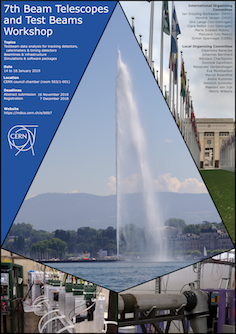Speaker
Description
The muon collider idea was born some decades ago, but nowadays it is very attractive since such a machine would provide both a high centre of mass energy, typical of hadron accelerators, and a clean experimental environment, typical of lepton machines.
Thanks to its features, the muon collider can help to consolidate the present knowledge of the Standard Model of particle physics (SM) and search for deviations from its predictions that would be signal of new physics. The muon collider can therefore be used to explore the multi-TeV frontier and serve as Higgs boson factory, helping in the search for the double-Higgs boson production, fundamental point for probing the SM.
The muon collider has to face lots of challenges. One of these is the production of a low-emittance muon-antimuon beam which serves as input for a suitable accelerator complex. Recently a new approach for producing such low-emittance muons has been proposed, and it exploits the process $e^+ e^- \rightarrow \mu^+ \mu^-$, through the collision of a 45 GeV positron beam on a Beryllium fixed target. The energy of the incident beam is chosen in order to use the interested process at the threshold in order to obtain the desired muon-antimuon low emittance flux.
The experimental evidence of the new approach is the goal of the Low Emittance Mu$+$ Mu$-$ Accelerator (LEMMA) collaboration who realized in August and September 2018 dedicated tests with a 45 GeV positron beam on a Beryllium target in the H2 CERN experimental area. These tests were based on a silicon telescope set-up complemented by a dipole magnetic field (to separate the produced positive and negative particles), a set of calorimeters (to tag electrons and positrons), and a set of drift-tube chambers (to detect the produced muons with high precision).
The ultimate goal of the LEMMA collaboration is the measurement of the emittance of the produced muons and antimuons flux and the measurement of the corresponding cross-section at threshold.
The concept and the experimental set-up of the LEMMA test beams will be presented is this talk, together with the results of the analysis of collected data.




